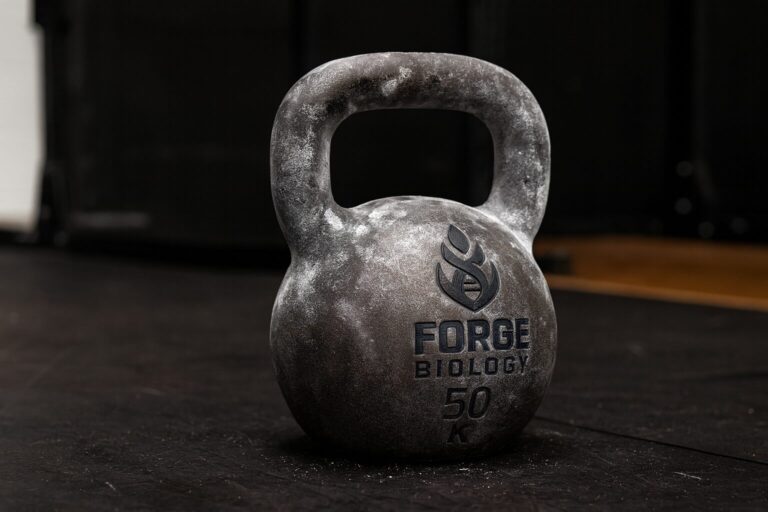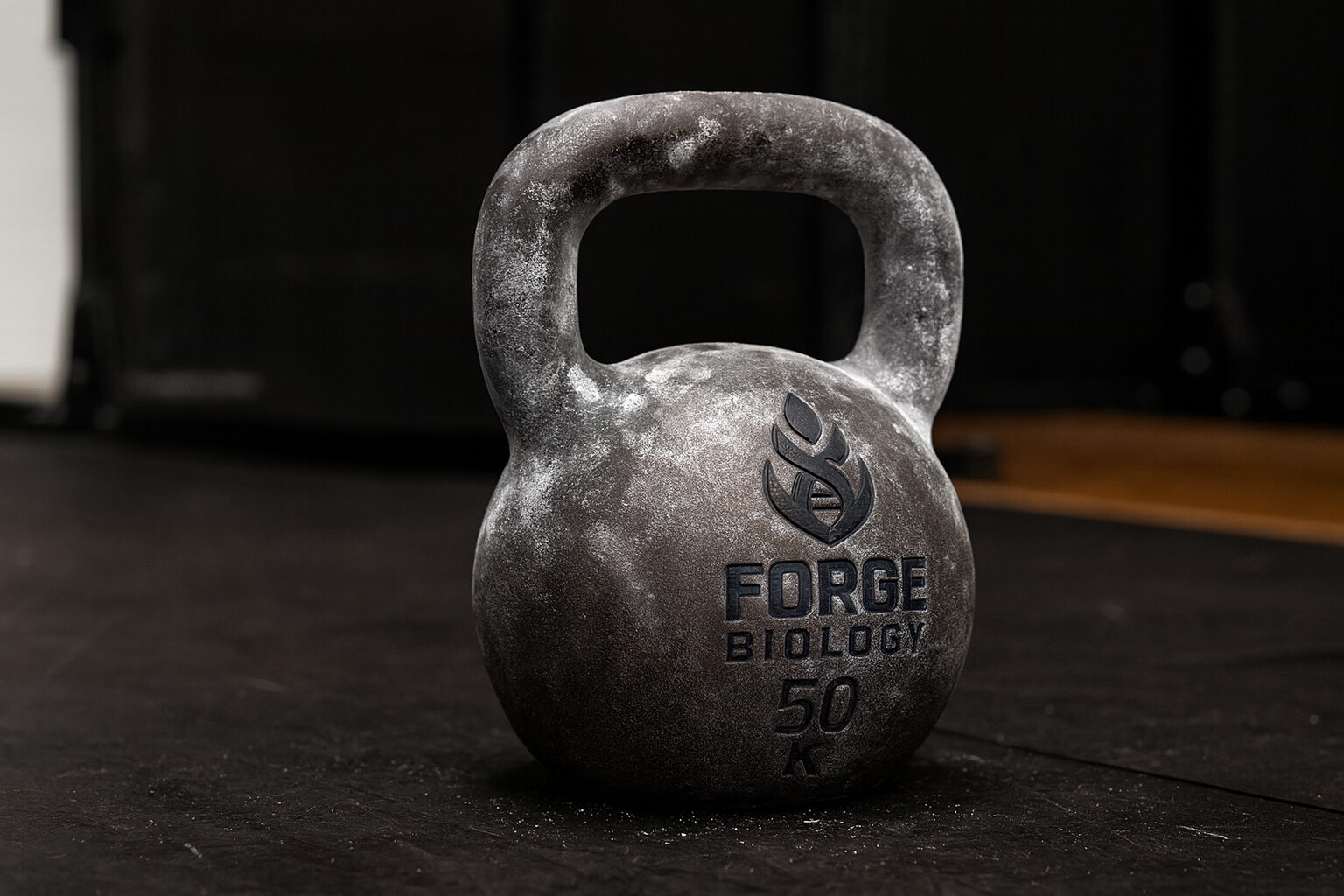
If there’s one piece of equipment that has truly earned its place in both old-school gyms and modern sports science facilities, it’s the kettlebell. Simple, versatile, and brutally effective, this cannonball-shaped tool delivers one of the most complete and efficient forms of training known to athletes, coaches, and scientists alike.
At Forge Fitness, we believe in training that’s rooted in evidence, efficiency, and functionality — and few tools embody these principles better than the kettlebell.
The Origin of the Kettlebell
Kettlebells originated in Russia in the 1700s as a means to weigh crops. Farmers began using them to showcase strength at festivals, and soon after, strongmen and soldiers adopted them for physical conditioning. By the 20th century, they had become a staple of Soviet physical training — a compact, portable gym that built real-world strength.
Today, the kettlebell has been rediscovered by the global fitness community as a bridge between old-world strength and modern functional performance.
What Makes Kettlebells Different?
Unlike a dumbbell, where the weight is evenly balanced, the kettlebell’s center of gravity sits several inches away from the handle. This offset load changes everything.
Each movement requires greater core engagement, grip strength, and stabilization, forcing the body to recruit multiple muscle groups at once. Instead of isolating a single muscle, kettlebell training activates an entire kinetic chain — teaching muscles to work together, not separately.
That’s why many professional coaches describe kettlebell training as “strength with purpose”.
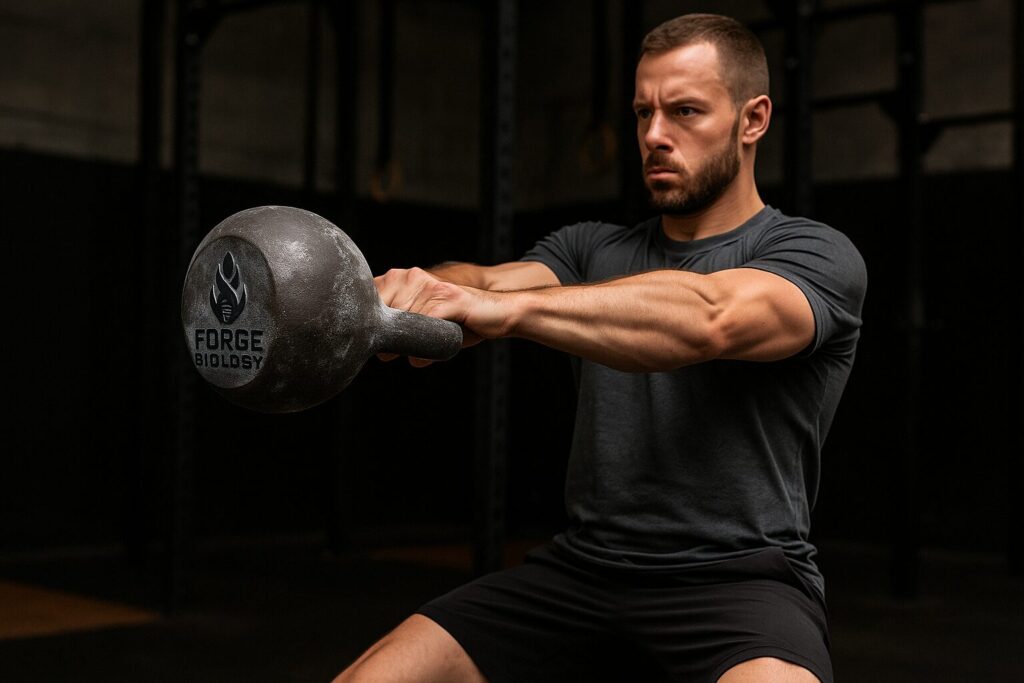
The Science Behind the Swing
The kettlebell swing — the movement that defines the tool — is far more than a cardio exercise. It’s a biomechanical symphony of hip hinge, explosive extension, and controlled deceleration.
A 2012 study published in the Journal of Strength and Conditioning Research found that kettlebell swings elevate heart rate and oxygen consumption to levels comparable to running at 6 mph — effectively delivering a HIIT-style cardiovascular response while building power and endurance simultaneously.
Another study (Lake & Lauder, 2012) concluded that kettlebell swings significantly improve posterior chain power output, benefiting sports that rely on sprinting, jumping, and explosive lifts.
That means: you burn fat, build muscle, and improve athletic performance in one move.
The Key Benefits of Kettlebell Training
1. Full-Body Conditioning
Each kettlebell session challenges the entire body — from grip to glutes. Swings, cleans, snatches, and get-ups integrate muscular endurance, core stability, and aerobic capacity.
2. Functional Strength
Kettlebells mimic natural movement patterns. The body doesn’t just push and pull; it twists, rotates, and stabilizes. Training with an unstable load teaches muscles to cooperate — exactly how they must in daily life or sport.
3. Enhanced Mobility and Joint Health
Dynamic kettlebell movements open hips, shoulders, and thoracic spine while reinforcing stability. Unlike rigid machines, kettlebells strengthen through motion, not against it.
4. Explosive Power Development
Exercises like swings and snatches train the stretch-shortening cycle of muscles — the same mechanism behind sprinting and jumping. The result is higher power output and faster reaction capability.
5. Time Efficiency
In as little as 20 minutes, you can achieve a strength + cardio + mobility workout, ideal for busy individuals seeking maximal return in minimal time.
6. Scalability and Safety
Beginners can start with simple patterns like the goblet squat or deadlift, while advanced athletes can progress to double kettlebell complexes, ensuring continuous adaptation and challenge.
Core Exercises Every Athlete Should Master
Images: Cotter, Steve. Treinamento com kettlebell [recurso eletrônico] / Steve Cotter ; tradução: Vinícius Mancio ; revisão técnica: Ivan Jardim. – Porto Alegre : Artmed, 2015. Editado também como livro impresso em 2015. ISBN 978-85-8271-111-8 1. Método kettlebell. 2. Treinamento físico. I. Título. CDU 613.72
- Kettlebell Swing – The foundation of ballistic strength; teaches hip power and endurance.
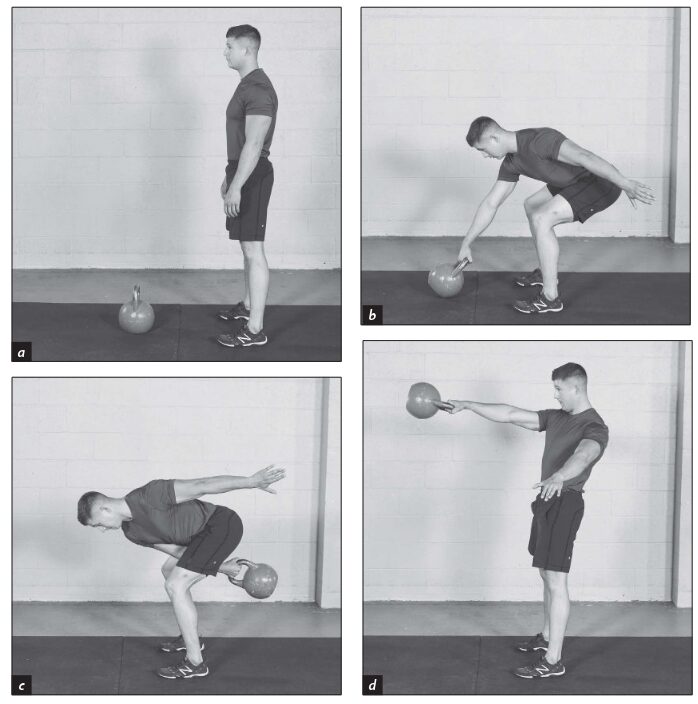
- Goblet Squat – Perfect for improving posture, mobility, and leg strength.
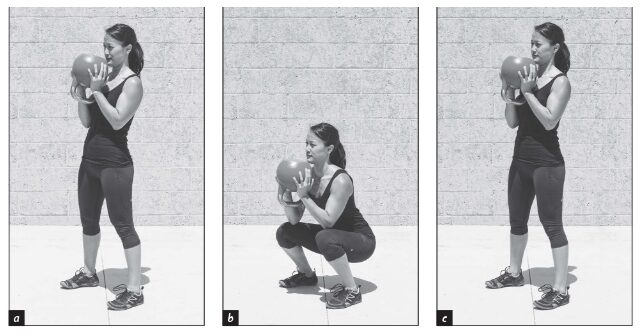
- Turkish Get-Up – A full-body test of coordination, stability, and shoulder integrity.
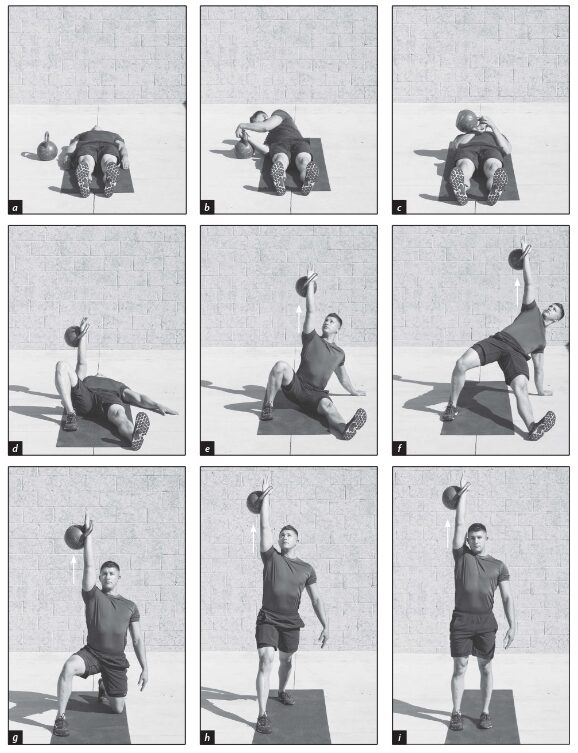
- Clean and Press – Develops power transfer from lower to upper body.
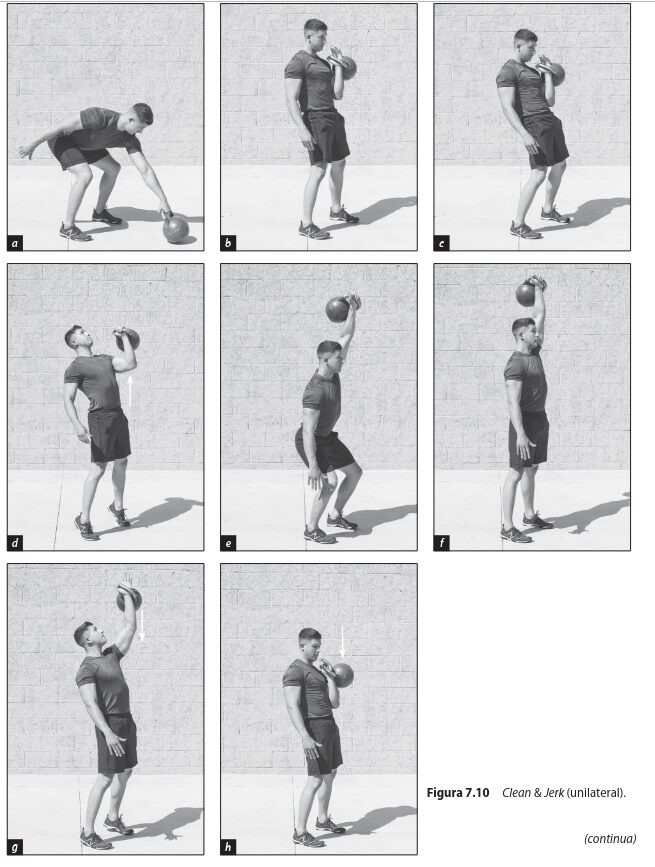
- Snatch – A total-body explosive lift that builds grip, stamina, and control.

Each of these exercises forms part of an integrated approach that targets multiple energy systems and muscle chains, optimizing every minute of your training session.
What the Research Says
Science consistently supports the physiological benefits of kettlebell training:
- Jay et al. (2013) found that eight weeks of kettlebell workouts improved lower back strength and endurance, reducing the risk of injury.
- Farrar et al. (2010) demonstrated that kettlebell swings produce high-intensity cardiovascular responses, equivalent to treadmill running.
- Manocchia et al. (2013) concluded that kettlebell workouts enhance muscular strength and anaerobic capacity, even when performed just twice a week.
These results confirm what practitioners have known for centuries — a single kettlebell can transform your fitness.
Kettlebell vs Traditional Weight Training
While both have their place, kettlebell workouts stand out for their dynamic and metabolic nature. Traditional weightlifting focuses on maximal load under control, whereas kettlebells introduce momentum and acceleration — factors that train coordination, reflexes, and endurance.
In short:
- Dumbbells build muscle mass.
- Kettlebells build usable, real-world strength and movement quality.
That’s why kettlebells are increasingly used not only by athletes but also by special forces, firefighters, and rehabilitation professionals who need strong, resilient bodies that can move under stress.
Integrating Kettlebells into Your Routine
You don’t need to replace your entire training plan. Start small:
- Add 3 sets of 20 kettlebell swings after your main lift for conditioning.
- Replace isolation warmups with kettlebell mobility drills.
- Dedicate one full-body session per week to kettlebell circuits for endurance.
This integration promotes neuromuscular coordination and metabolic flexibility, enhancing the effect of any other training method you use.
Common Mistakes and How to Avoid Them
Even though the kettlebell looks simple, its effectiveness depends on precision and control. Avoid these errors:
- Using the arms instead of hips to drive the swing.
- Starting with a weight that’s too heavy.
- Ignoring the neutral spine position.
- Rushing into advanced moves like snatches or jerks without mastering the basics.
Proper coaching or self-filmed review can drastically improve technique and safety. Remember: with kettlebells, form always precedes load.
Who Should Train with Kettlebells?
The beauty of the kettlebell lies in its universality. Whether you’re a beginner, a tactical operator, or a professional athlete, it adapts to your level.
- Beginners develop body awareness, coordination, and core stability.
- Athletes use kettlebells to improve power, grip, and explosive control.
- Rehabilitation professionals leverage their dynamic motion to rebuild strength safely.
- Fitness enthusiasts enjoy short, effective workouts that burn calories fast.
Kettlebells for Fat Loss and Metabolic Conditioning
Because kettlebell training engages large muscle groups in high-velocity movement, it demands enormous energy expenditure. A session of swings and cleans can burn up to 20 calories per minute (ACE Research, 2010).
Moreover, the afterburn effect (EPOC) — elevated oxygen consumption post-workout — keeps your metabolism high for hours. This makes kettlebells an exceptional choice for body recomposition and fat loss.
The Forge Fitness Philosophy
At Forge Fitness, we decode human performance through a scientific lens. Our philosophy combines biomechanics, physiology, and practical experience to design methods that deliver measurable results.
Kettlebell training perfectly embodies this mission — uniting strength, mobility, and cardiovascular conditioning into one seamless system.
Whether your goal is to build lean muscle, burn fat, or move better, kettlebells provide the foundation.
Final Thoughts
Kettlebells are not a fitness fad — they’re a timeless training instrument validated by centuries of use and modern sports science. From elite athletes to beginners, they offer a pathway to stronger, more resilient, and more functional bodies.
If you’re ready to elevate your training, explore the science of performance with Forge Fitness.
Forge Your Mind. Build Your Biology.
Join the Forge Biology newsletter — where science meets strength.
Every week, you’ll get:
-
Evidence-based insights on training, performance, and recovery
-
Real analyses of supplements that work (and the ones that don’t)
-
Deep dives into hormones, nutrition, and human optimization
No fluff. No marketing hype. Just data-driven knowledge to build a stronger body — and a sharper mind.
Subscribe now and start mastering your biology.





